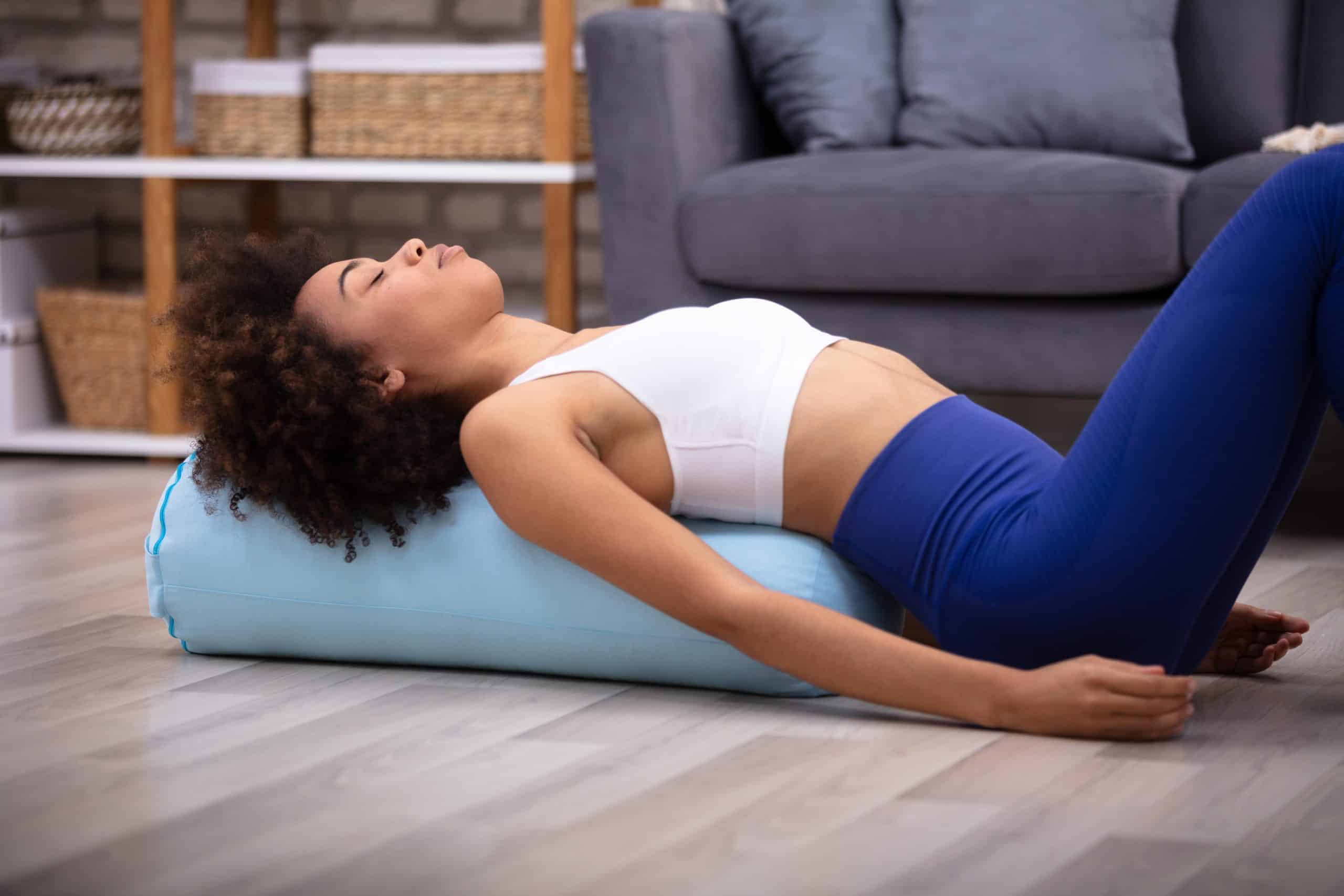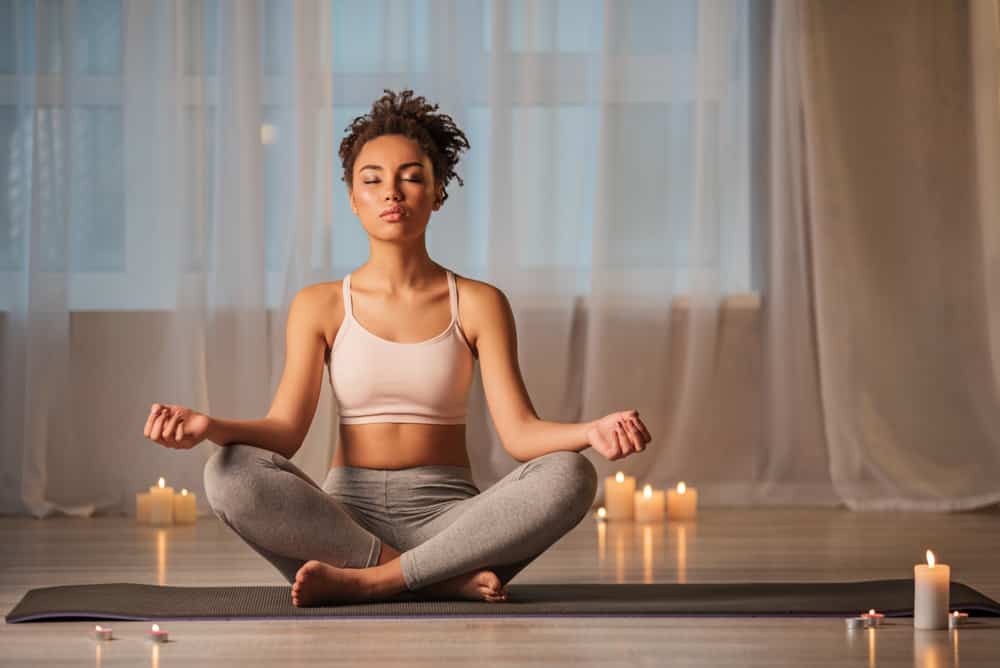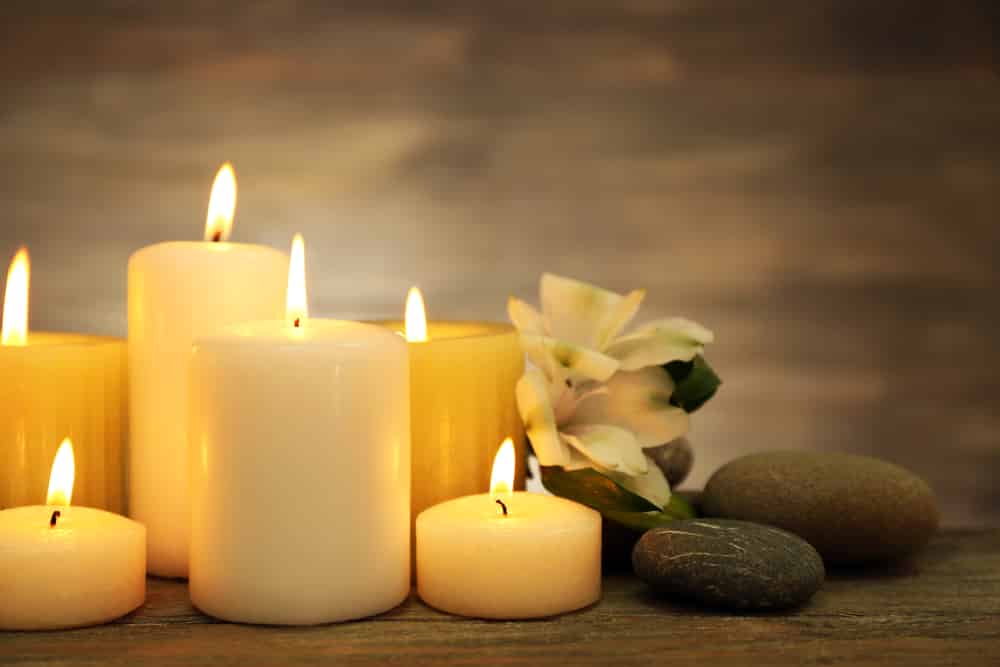Meditation is a practice focused on attaining calmness, clarity, and awareness. It involves a set of techniques that are intended to encourage a heightened state of awareness and focused attention. Meditation has the limelight right now due to the many benefits associated with it. Since the time people started meditating, it has been associated with certain hand movements and positions. These meditation hand positions play an important role when it comes to meditation.
What Is Mudra?
As stated, meditation contains certain hand movements and positions; these gestures are referred to as mudra (7). Mudra is the use of hand gestures during meditation to channel your body’s energy flow. These hand positions are used during meditation to reinforce specific healing states of the mind. These gestures are said to help draw your mindfulness inside your body and reconnect you with your heart’s language of compassion, kindness, goodness, creativity, and joy.
When it comes to mudras, each finger represents a different element: the thumb is used to represent space; the index finger is used to represent the air; the middle finger is used to represent fire; the ring finger is used to symbolize water; the pinky is used to represent the earth. Thus, it is believed when you combine different fingers in different positions into creating different mudras, you are actually tapping into that powerful energy.
Read More: Mindfulness Tips: Practical Ways To Improve Your Awareness And Bring Balance To Daily Life
Mudras And States Of Mind
Mudras have been used since people started meditating. They are used to encourage a certain state of mind. Every mudra has an outer symbolic meaning and an inner experimental function. This is because mudras communicate to the person performing them and to the person observing them.
Mudras are sometimes referred to as seals. The reason for the name is in the fact that you are joining two parts of your hand. Mudra is also said to help unblock chakra. These are energy centers in your body. For chakras to function to the best of their ability, they need to stay open or balanced. When a certain chakra is blocked, one may experience physical or emotional symptoms related to that specific chakra. Your body is made up of seven main chakras that run along your spinal cord. Mudras are said to help keep those chakras open and balanced.
Whether you want to learn how to exit the spiral of self-harming behavior, overcome anxiety, cure insomnia or simply give yourself the time and space to bliss out and soak up the moment of complete peace and quiet – BetterMe: Meditation & Sleep app is exactly the tool for that! If you don’t take care of number one, who will?
Different Hand Positions For Meditation
Now that you know what mudra is, there are so many different hand positions and gestures one can use during meditation. Just highlighted earlier, these different mudras have different meanings, and people use them for different reasons.
Here are several different mudras and what they mean:
-
Bodhyagri
This Buddhist meditation hand position is also known as mudra of supreme wisdom (8). Other people refer to it as the mudra of the six elements.
You do this mudra by grasping your right index finger into the fist of the left hand.
-
Bhumisparsha
This mudra is also referred to as the earth touching mudra or calling the earth witness (3). It is a very common mudra among the Buddhists as it is used to represent the moment of Buddha’s awakening (8). When the Buddha becomes enlightened, he touches the earth with this mudra so that the earth can bear witness (2). This mudra is usually performed in a seated position. Here, your left-hand rests on your lap with its palm facing upwards while the right-hand palm rests facing downwards on the right knee with its fingers pointing towards the ground or, in this case, earth.
-
Dharmachakra
This mudra is also referred to as the mudra of turning the wheel of teaching (3). In this particular hand gesture, both hands are used.
To do it, you first take your right forefinger and make sure it touches your right thumb. Do the same thing with your left hand, where your left forefinger touches your left thumb. This results in both hands creating two circles or wheels. The left hand should be facing inwards, and the right hand should be facing outwards. The left palm is supposed to be in front of the right palm. Both hands should be held close to the heart, just in front of it. It was said to be used when the Buddha first taught after his enlightenment. The wheel rotates, and hence it represents movement and transition (8).
-
Abhaya
This is the gesture of fearlessness or blessing (3). It is used to represent the protection, peace, benevolence, and dispelling of fear (8). It can be performed while sitting or standing.
To do this mudra, you should first raise your right hand to shoulder height. This hand should be upright while the palm is facing outwards and the fingers pointing upwards. The left hand is usually left hanging around. This mudra is the gesture of fearlessness. Fearlessness is the next stage of Buddha’s life just after achieving enlightenment.
-
Varuna
This gesture means to balance the water element in the body. It is said to help relieve constipation or indigestion (5).
To make this gesture, you first touch the tip of your pinkies with your thumbs’ tips keeping your other three fingers extending out. Your hands should be facing up and on your knees.
-
Jnana
This is the gesture of knowledge. It is used to remind different people that they have access to the inner fountain of wisdom within themselves (5).
To do this mudra, you first curl your forefingers towards the base of your thumb to create a circle. The rest of your fingers should be straight. You can choose to either place your palms facing up or down on your knees.
-
Karana
This mudra is used to signify warding off evil. It helps to ward off evil, get rid of demons, and drive out negative energy (3). It can be used to boost happiness (5). This mudra can be done while standing or sitting.
To do it, you first touch the middle and ring finger of your right hand to your thumb. Then extend the small finger and the forefinger of the same hand. This creates a gesture that closely resembles the “rock on” hand symbol. Your right hand should be placed in front of your heart, and your palm should be facing outwards.
-
Gyan
This is the most common mudra. If you go to the internet and search for meditation, you are likely to come across a good number of pictures showing this gesture. This mudra is said to improve one’s concentration and sharpen their mind (1, 5). It is also used for enhancing consciousness and awareness.
To make this gesture, you first start by touching your forefinger tip to the tip of your thumb. The next thing to do is extend the rest of the fingers and make sure they are straight.
-
Buddhi
This is the gesture for mental clarity. It is used when one wants to understand what your subconscious is telling you (1). An example of something you would want to understand is what your dreams are trying to tell you or what they mean. This gesture is known to improve communication between the internal and external.
To do this mudra, you first touch your thumb to your small finger. The next step is to extend and make sure the rest of the fingers stay straight.
-
Shuni
This gesture is used to improve one’s intuition, alertness, and sensory powers (1, 5). It also helps to purify your thoughts and emotions. If you want clarity on your next step of action or just anything, this is the mudra for that. It uses the fire within you to bring in that focused attention and intention.
To make this gesture, you first touch the tip of your middle finger to the tip of your thumb. The next thing to do is to extend your other fingers and make sure they stay in that position.
-
Prana
We all have prana. Prana is the vital life force within us all (1). This is quite an important gesture due to what it does. It is used to activate dormant energy in your body (the prana). It helps awaken your personal prana and be more in tune with the prana around you (5).
To do this mudra, you first start by touching your ring and small finger to the tip of your thumb. Then, straighten the other two fingers and keep them in that position.
-
Dhyana
This gesture is shared among most eastern meditation practices. This mudra is used to bring one into deeper concentration. It is also known to help in achieving inner peace (1).
To make this gesture, you start by placing both hands on top of each other, both palms facing upwards. The right hand should be on top of the left hand. The tips of the thumbs should be touching each other (6). The right top hand is usually used to symbolize enlightenment, while the left bottom hand is used to represent the world of appearances or illusion (4).
-
Ganesha
This gesture works great when you want to remove all types of obstructions in your life. It helps improve one’s positivity and is a source of encouragement during hard times (1).
To do this mudra, you first place your left hand in front of your chest. The palm of this hand should be facing outwards, and the thumb should be facing down. The next thing to do is to bring your other hand in front of the left hand. The palm of your right hand should be facing you and should be on the left palm. Then finally, lock your finger together, holding them in a half-bent position.
-
Varada
This is the gesture for giving or generosity (3). It represents offering, charity, giving, compassion, and sincerity.
To do this mudra, you first rest your left hand on your left knee. Your left palm should be facing up, and your fingers should be extended. When it comes to the right hand, you can choose to make a different gesture, or you can just place it on your right knee facing upwards.
-
Anjali
This gesture comes in different names. Some people refer to it as Namaskara Mudra and others Hridayanjali Mudra. This is another very common gesture. This is the gesture for greetings, prayer, and adoration (3).
To do this mudra, place your palms together at the level of your heart. Make sure all your fingertips are pointed upwards (7).
With stress being a constant presence in our lives, taking time to process emotions, decompress and get into the right frame of mind is absolutely crucial. With BetterMe: Meditation & Sleep app your mental health is in good hands! Start using it now!
-
Vitarka
This is the gesture of teaching. It helps signify the transmission and discussion of the teachings of Buddha (4).
To make this gesture, you first touch the tip of your right-hand index finger to the tip of your thumb, creating a circle that symbolizes the wheel of teaching. Then raise this hand to chest level and make sure your hand faces outwards. Your left hand should then be pointing downwards, facing outwards, or lying palm up on your lap.
-
Apana
This is the gesture for eliminating toxins. It is good for both mental and physical digestion, as well as eliminating waste from the body (2).
To do this posture, you first bring your ring finger and your middle finger to your thumb. These two fingers should rest just behind the tip of the thumb.
The Bottom Line
Those are the main examples of meditation hand positions. As you have seen, each mudra is created by different finger positions and hand positions. Every mudra is responsible for a certain thing. If you want to achieve concentration or gain compassion, there is a mudra for each of those. You can’t really say you are meditating if you don’t include mudras in the process. Try and incorporate the different hand gestures that have been highlighted in this article in your meditation practice, and see how it works out for you.
DISCLAIMER:
This article is intended for general informational purposes only and does not address individual circumstances. It is not a substitute for professional advice or help and should not be relied on to make decisions of any kind. A licensed physician should be consulted for diagnosis and treatment of any medical conditions. Any action you take upon the information presented in this article is strictly at your own risk and responsibility!
SOURCES:
- 10 Powerful Meditation Mudras and How to Use Them (2019, chopra.com)
- Buddha Jayanti 2020: Buddhist Mudras, Hand Gestures and their Meaning (2020, jagranjosh.com)
- Buddha poses: the meaning of Buddha statues’ hands (2020, catawiki.com)
- Buddhist Mudras (Hand Gestures) and Their Meanings (2020, thespruce.com)
- Incorporate Hand Mudras Into Your Meditation Practice to Level up Your Life (2018, wellandgood.com)
- Meditation Posture: Hands (2007, wildmind.org)
- Mudra Hand Gestures in Yoga (2020, verywellfit.com)
- Mudra: What Do Buddhist Hand Gestures Mean? (1996, tricycle.org)
















